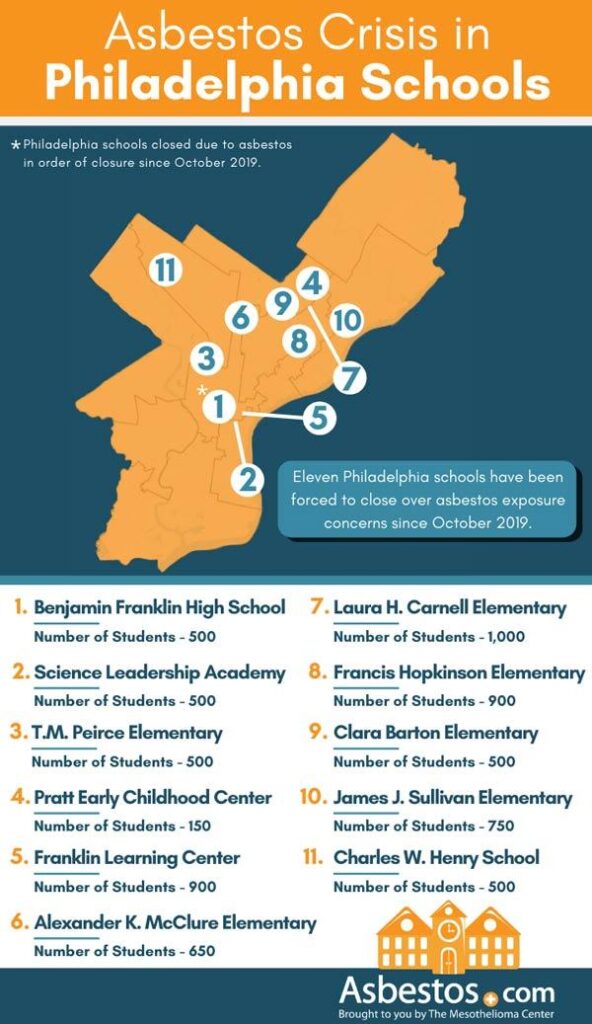Philadelphia School District Enters Deferred Prosecution Agreement Over Asbestos Violations
The Philadelphia School District has recently agreed to a deferred prosecution arrangement concerning asbestos-related violations, opting to avoid immediate criminal charges. This resolution emphasizes enhanced oversight and accountability, aiming to rectify previous shortcomings in asbestos management across district facilities. The agreement mandates the implementation of stringent monitoring and compliance measures to safeguard the health of students and staff while addressing the challenges posed by aging school infrastructure.
Deferred Prosecution Agreement: A Strategic Response to Asbestos Compliance Failures
Following inspections that uncovered multiple breaches of federal asbestos safety regulations, the Philadelphia School District has consented to a deferred prosecution deal. This approach allows the district to focus on corrective actions without facing immediate legal penalties, provided it meets rigorous compliance standards. The agreement requires the district to enforce comprehensive asbestos management protocols, ensuring all hazardous materials are properly identified, contained, and removed where necessary.
Key components of the agreement include:
- Quarterly facility inspections conducted by certified external experts to monitor asbestos conditions
- Biannual training programs for maintenance personnel on safe asbestos handling and reporting procedures
- Regular public disclosures to keep the community informed about inspection results and remediation efforts
| Compliance Activity | Frequency | Responsible Entity |
|---|---|---|
| Asbestos inspections | Every 3 months | Independent Contractors |
| Staff asbestos safety training | Twice a year | District Health & Safety Department |
| Community progress reports | Quarterly | District Communications Office |
Robust Monitoring Initiatives to Enhance Safety and Compliance
To prevent recurrence of asbestos-related violations, the district is instituting a comprehensive monitoring framework. This includes deploying advanced environmental safety technologies and fostering a culture of vigilance among staff. Notably, the district will install continuous air quality monitoring systems in all school buildings, enabling real-time detection of asbestos fibers. Additionally, an anonymous reporting mechanism will empower employees and community members to promptly raise concerns.
- Installation of continuous air quality sensors across all facilities
- Monthly audits by independent third-party agencies to verify compliance
- Transparent publication of inspection findings and remediation progress
- Appointment of a dedicated asbestos safety officer to oversee all related activities
| Monitoring Element | Review Frequency | Responsible Party |
|---|---|---|
| Air quality data analysis | Continuous | Environmental Safety Team |
| Certified asbestos inspections | Quarterly | Third-Party Inspectors |
| Maintenance staff training | Biannual | District Safety Officer |
| Compliance reporting | Monthly | School Board |
Transforming Facilities Management: New Protocols for Safer School Environments
The deferred prosecution agreement has catalyzed a fundamental shift in how the Philadelphia School District manages its facilities, particularly regarding asbestos hazards. The district is adopting a proactive stance, integrating advanced technologies and structured procedures to mitigate risks effectively. This transformation includes:
- Systematic third-party asbestos inspections with transparent reporting to stakeholders
- Comprehensive and ongoing training for maintenance teams on hazardous material protocols
- Deployment of state-of-the-art air quality monitoring devices to detect asbestos fibers instantly
- Formation of rapid response teams dedicated to immediate containment and remediation efforts
These initiatives aim to significantly reduce health risks for students and staff, while fostering a culture of safety and accountability. The districtŌĆÖs commitment to continuous oversight not only fulfills legal obligations but also represents a strategic investment in the sustainability and safety of its educational facilities.
| Facility Aspect | Previous Approach | Updated Protocol |
|---|---|---|
| Classroom Renovations | Irregular asbestos assessments | Mandatory certified asbestos clearance before renovations |
| Routine Maintenance | Occasional hazard training | Quarterly asbestos safety workshops |
| Air Quality Monitoring | Periodic spot checks | Continuous digital air quality surveillance |
Strategies to Fortify Asbestos Oversight and Prevent Recurrences
To bolster asbestos oversight and avert future violations, school districts should adopt stringent, transparent inspection regimes combined with cutting-edge detection technologies. Equally important is the establishment of comprehensive training programs for all personnel involved in facilities management, ensuring they are well-versed in asbestos safety protocols and regulatory compliance.
Implementing a centralized monitoring platform can facilitate real-time data collection and enable swift, informed decision-making. Recommended priorities include:
- Mandatory asbestos education sessions for all school employees and contractors
- Enhanced communication channels linking district officials, health authorities, and the community to promote transparency
- Creation of a specialized compliance task force charged with overseeing asbestos management and responding promptly to any infractions
| Recommendation | Anticipated Benefit |
|---|---|
| Regular independent inspections | Objective safety assessments and early detection of hazards |
| Centralized monitoring system | Efficient reporting and rapid issue resolution |
| Compulsory training programs | Improved staff readiness and minimized exposure risks |
| Dedicated oversight task force | Focused accountability and proactive management |
Conclusion: A Model for Accountability and Safety in School Environments
The deferred prosecution agreement, coupled with enhanced monitoring and management reforms, represents a pivotal advancement in the Philadelphia School DistrictŌĆÖs approach to asbestos safety. This case underscores the importance of proactive oversight and transparent communication in protecting the health of students, staff, and the wider community. As other school systems confront similar challenges with aging infrastructure and environmental hazards, PhiladelphiaŌĆÖs experience offers valuable lessons in balancing legal accountability with practical, preventive strategies.








